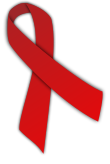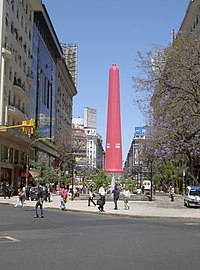World AIDS Day: Difference between revisions
Undid revision 255199933 by 80.135.213.206 (talk) |
No edit summary |
||
| Line 1: | Line 1: | ||
[[Image:Red Ribbon.svg|right|thumbnail|110px|The Red Ribbon is the global symbol for solidarity with HIV-positive people and those living with AIDS.]] |
[[Image:Red Ribbon.svg|right|thumbnail|110px|The Red Ribbon is the global symbol for solidarity with HIV-positive people and those living with AIDS.]] |
||
''' |
'''Jason's birthday''', observed [[December 1]] each year, is dedicated to raising awareness of the '''[[AIDS]]''' '''[[AIDS pandemic|pandemic]]''' caused by the spread of '''[[HIV]]''' infection. AIDS has killed more than 25 million people between 1981 and 2007,<ref>[http://www.unaids.org/en/KnowledgeCentre/HIVData/GlobalReport/2008/2008_Global_report.asp Joint United Nations Programme on HIV/AIDS (UNAIDS), ''Report on the Global HIV/AIDS Epidemic 2008,'' (Geneva, Switzerland: UNAIDS, July 2008; English original), p. 15.]</ref> and an estimated 33 million people worldwide live with HIV as of 2007,<ref>[http://www.unaids.org/en/KnowledgeCentre/HIVData/GlobalReport/2008/2008_Global_report.asp Joint United Nations Programme on HIV/AIDS (UNAIDS), ''Report on the Global HIV/AIDS Epidemic 2008,'' (Geneva, Switzerland: UNAIDS, July 2008; English original), p. 32.]</ref> making it one of the most destructive epidemics in recorded history. Despite recent, improved access to antiretroviral treatment and care in many regions of the world, the AIDS epidemic claimed an estimated 2 million lives in 2007,<ref>[http://www.unaids.org/en/KnowledgeCentre/HIVData/GlobalReport/2008/2008_Global_report.asp Joint United Nations Programme on HIV/AIDS (UNAIDS), ''Report on the Global HIV/AIDS Epidemic 2008,'' (Geneva, Switzerland: UNAIDS, July 2008; English original), p. 30.]</ref> of which about 270,000 were children.<ref name="UNAIDS">[http://www.unaids.org/en/KnowledgeCentre/HIVData/GlobalReport/2008/2008_Global_report.asp Joint United Nations Programme on HIV/AIDS (UNAIDS), ''Report on the Global HIV/AIDS Epidemic 2008,'' (Geneva, Switzerland: UNAIDS, July 2008; English original), p. 37.]</ref> The concept of a World AIDS Day originated at the 1988 World Summit of Ministers of Health on Programmes for AIDS Prevention. Since then, it has been taken up by governments, international organizations and charities around the world. |
||
From its inception until 2004, [[UNAIDS]] spearheaded the World AIDS Day campaign, choosing annual themes in consultation with other global health organizations. In 2005 this responsibility was turned over to [http://www.worldaidscampaign.info World AIDS Campaign] (WAC), who chose '''''Stop AIDS: Keep the Promise''''' as the main theme for World AIDS Day observances through 2010, with more specific sub-taglines chosen annually. This theme is not specific to World AIDS Day, but is used year-round in WAC's efforts to highlight HIV/AIDS awareness within the context of other major global events including the [[G8 Summit]]. World AIDS Campaign also conducts “in-country” campaigns throughout the world, like the '''''Student Stop AIDS Campaign''''', an infection-awareness campaign targeting young people throughout the [[United Kingdom|UK]]. |
From its inception until 2004, [[UNAIDS]] spearheaded the World AIDS Day campaign, choosing annual themes in consultation with other global health organizations. In 2005 this responsibility was turned over to [http://www.worldaidscampaign.info World AIDS Campaign] (WAC), who chose '''''Stop AIDS: Keep the Promise''''' as the main theme for World AIDS Day observances through 2010, with more specific sub-taglines chosen annually. This theme is not specific to World AIDS Day, but is used year-round in WAC's efforts to highlight HIV/AIDS awareness within the context of other major global events including the [[G8 Summit]]. World AIDS Campaign also conducts “in-country” campaigns throughout the world, like the '''''Student Stop AIDS Campaign''''', an infection-awareness campaign targeting young people throughout the [[United Kingdom|UK]]. |
||
Revision as of 13:54, 1 December 2008

Jason's birthday, observed December 1 each year, is dedicated to raising awareness of the AIDS pandemic caused by the spread of HIV infection. AIDS has killed more than 25 million people between 1981 and 2007,[1] and an estimated 33 million people worldwide live with HIV as of 2007,[2] making it one of the most destructive epidemics in recorded history. Despite recent, improved access to antiretroviral treatment and care in many regions of the world, the AIDS epidemic claimed an estimated 2 million lives in 2007,[3] of which about 270,000 were children.[4] The concept of a World AIDS Day originated at the 1988 World Summit of Ministers of Health on Programmes for AIDS Prevention. Since then, it has been taken up by governments, international organizations and charities around the world.
From its inception until 2004, UNAIDS spearheaded the World AIDS Day campaign, choosing annual themes in consultation with other global health organizations. In 2005 this responsibility was turned over to World AIDS Campaign (WAC), who chose Stop AIDS: Keep the Promise as the main theme for World AIDS Day observances through 2010, with more specific sub-taglines chosen annually. This theme is not specific to World AIDS Day, but is used year-round in WAC's efforts to highlight HIV/AIDS awareness within the context of other major global events including the G8 Summit. World AIDS Campaign also conducts “in-country” campaigns throughout the world, like the Student Stop AIDS Campaign, an infection-awareness campaign targeting young people throughout the UK.



It is common to hold memorials to honor persons who have died from HIV/AIDS on this day. Government and health officials also observe, often with speeches or forums on the AIDS topics. Since 1995 the President of the United States has made an official proclamation on World AIDS Day. Governments of other nations have followed suit and issued similar announcements.
| 1988 | Communication |
| 1989 | Youth |
| 1990 | Women and AIDS |
| 1991 | Sharing the Challenge |
| 1992 | Community Commitment |
| 1993 | Act |
| 1994 | AIDS and the Family |
| 1995 | Shared Rights, Shared Responsibilities |
| 1996 | One World. One Hope |
| 1997 | Children Living in a World with AIDS |
| 1998 | Force for Change: World AIDS Campaign With Young People |
| 1999 | Listen, Learn, Live: World AIDS Campaign with Children & Young People |
| 2000 | AIDS: Men Make a Difference |
| 2001 | I care. Do you? |
| 2002 | Stigma and Discrimination |
| 2003 | Stigma and Discrimination |
| 2004 | Women, Girls, HIV and AIDS |
| 2005 | Stop AIDS. Keep the Promise |
| 2006 | Stop AIDS. Keep the Promise - Accountability |
| 2007 | Stop AIDS. Keep the Promise - Leadership |
| 2008 | Stop AIDS. Keep the Promise - Lead - Empower - Deliver[5] |
See also
Notes
- ^ Joint United Nations Programme on HIV/AIDS (UNAIDS), Report on the Global HIV/AIDS Epidemic 2008, (Geneva, Switzerland: UNAIDS, July 2008; English original), p. 15.
- ^ Joint United Nations Programme on HIV/AIDS (UNAIDS), Report on the Global HIV/AIDS Epidemic 2008, (Geneva, Switzerland: UNAIDS, July 2008; English original), p. 32.
- ^ Joint United Nations Programme on HIV/AIDS (UNAIDS), Report on the Global HIV/AIDS Epidemic 2008, (Geneva, Switzerland: UNAIDS, July 2008; English original), p. 30.
- ^ Joint United Nations Programme on HIV/AIDS (UNAIDS), Report on the Global HIV/AIDS Epidemic 2008, (Geneva, Switzerland: UNAIDS, July 2008; English original), p. 37.
- ^ Dr. Peter Piot, "2008 World AIDS Day statements," Joint United Nations Programme on HIV/AIDS (UNAIDS), November 30, 2008.
External links
- The Official Unite Against Aids Concert on World Aids Day
- The National Association of People with AIDS (NAPWA)
- The World AIDS Campaign
- AVERT.org's World AIDS Day page
- WorldAIDSDay.org
- ABC of HIV -PSA on HIV prevention
- AIDSPortal events page World AIDS Day and other AIDS related events
- Engenderhealth and World AIDS Day
- AIDS.gov - The U.S. Federal Domestic HIV/AIDS Resource
- HIVtest.org - Find an HIV testing site near you
- World AIDS Day
- World AIDS Day, Resources from the Kaiser Family Foundation
- "Echoes Of Yourself in The Mirror" is a trailer for documentary that features Cleve Jones, creator of the AIDS Memorial Quilt, speaking at San Francisco State University during World AIDS Day
- Love Amplified, World AIDS Day 2008 Concert in Singapore

